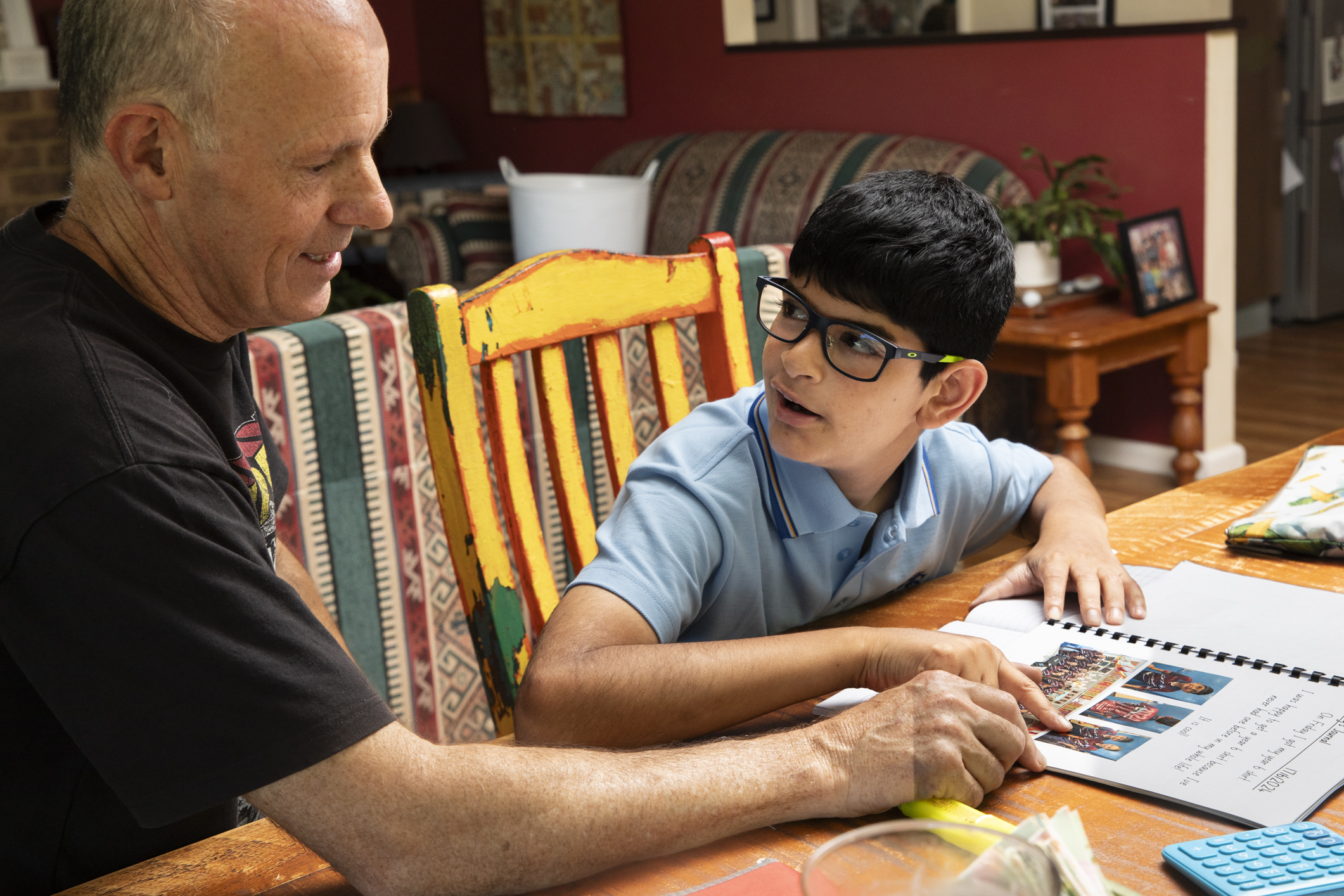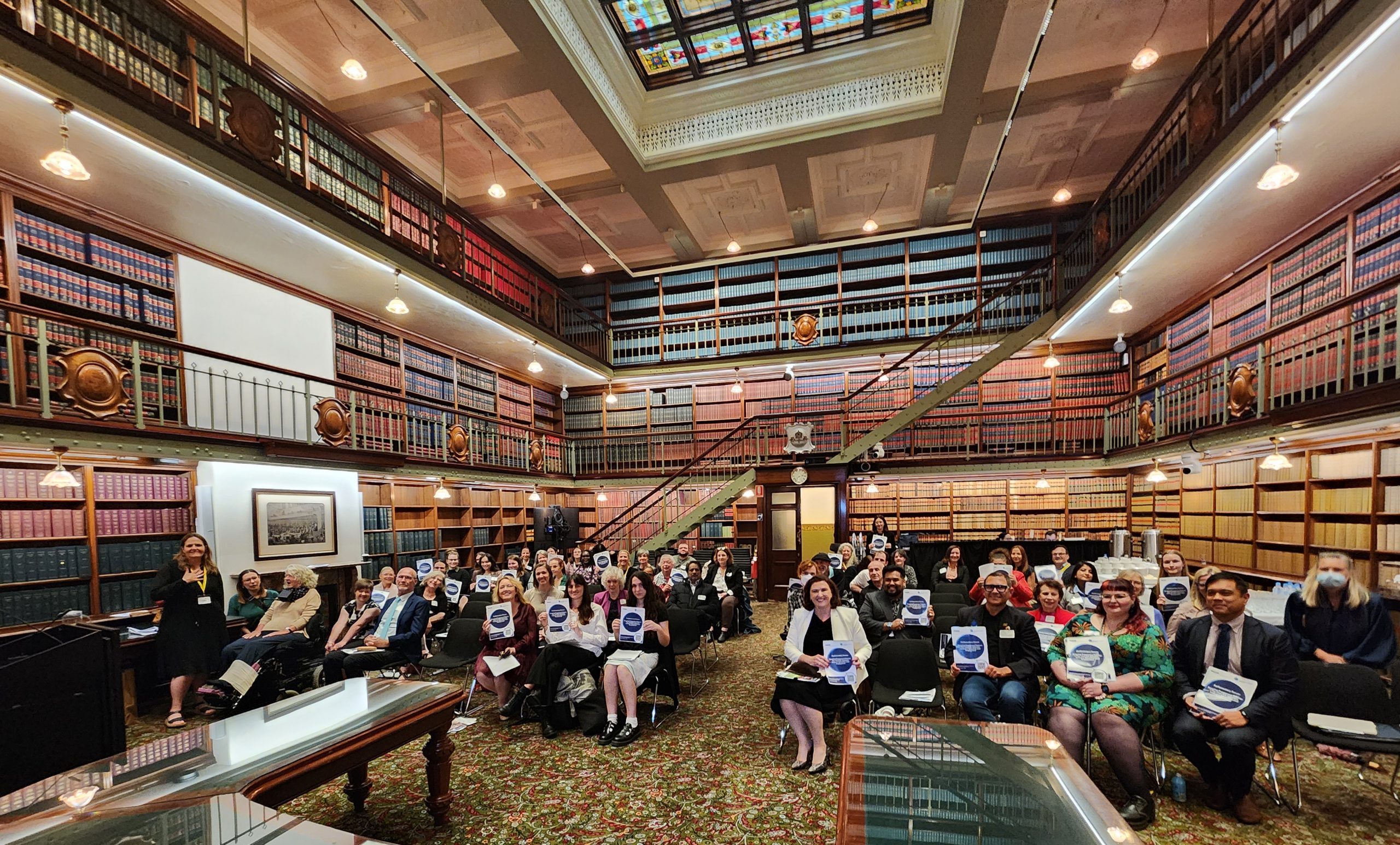
Family advocacy works to improve systems that create barriers for people with disability to genuinely participate in their communities. Obtaining an education at the local school alongside neighbourhood friends, accessing after school care with the other kids, being welcomed to participate in community sports and activities, getting a job, a home. All of these things most Australians can often take for granted however for many people with developmental disability some of these typical expectations and pathways require breaking down significant systems barriers that exclude the genuine participation of people. These barriers might be government structures, policy or practices, the systems and actions of disability support providers.
The change we seek is done alongside people with developmental disability and their families with families often required to speak up, take action with or on behalf of their family member with disability. This is particularly the case when their family members experience complex disability.
“That’s where systemic advocacy comes in. Systemic advocacy “lobbies for reform and change of social systems and structures that discriminate against, abuse and neglect people with disabilities” (Seymour and Peter).
Systemic advocacy is not individual, though it can be undertaken by just one person advocating on behalf of a group. The aim of systemic advocacy is to make positive, long-lasting change for a whole group or collective. While this kind of advocacy takes time, strategy and resources, in the medium or long term it is more effective than negotiating that systemic barrier person by person, over and over again.
Our Systemic Advocacy Work
Family advocacy works systemically for change in many areas, these include:
Early Childhood Education and Education
Family Advocacy believes in and works for inclusive education. This means children with disability being included in regular preschools, classrooms and tertiary settings with appropriate adjustments and support. Inclusive education seeks to address the learning needs of all children, youth and adults, with a specific focus on those who are subject to discrimination and exclusion. The principle of inclusive education was adopted at the United Nations Salamanca World Conference (UNESCO 1994) where inclusive education was viewed as a human rights issue and as a means of bringing about personal development and building relationships among individuals, groups and nations.
✦ This was stated clearly in Article 2: “Regular schools with an inclusive orientation are the most effective means of combating discrimination, creating welcoming communities, building an inclusive society and achieving education for all.”
Australia is a signatory to the United Nations Convention on the Rights of Persons with Disabilities (CRPD) which provides for this obligation in Article 24 (Inclusive Education). In 2016 the United Nations Committee on the Rights of Persons with Disabilities adopted General Comment No.4 to Article 24, which provides Governments with guidance on the scope of their obligation to provide inclusive education for people with disability. The document also highlights the importance of recognising the differences between exclusion, segregation, integration and inclusion.
Read Family Advocacy’s full position statement on inclusive education.
Driving change: A roadmap for achieving inclusive education in Australia
The Australian Coalition for Inclusive Education (ACIE), of which Family Advocacy is a core member, has released ‘Driving change: A roadmap for achieving inclusive education in Australia’. ACIE is an initiative bringing together organisations that share a commitment to advance inclusive education in Australia and across state and territory education systems, including government and non-government schools.
“Our Roadmap is underpinned by six key pillars to help realise inclusive education in Australia and prevent the violence, abuse, neglect and exploitation of students with disability. These pillars are drawn from the evidence base and embed the rights of students as set out in the United Nations (UN) Convention on the Rights of Persons with Disabilities (CRPD).”
The Roadmap for achieving inclusive education in Australia has two key sections:
- the outcomes that need to occur, stepped out over the next 10 years; and
- the key levers for change needed to realise these outcomes.
Employment
Family Advocacy believes in inclusive employment. This means a society where people with disability are working in valued jobs that are based on their interests and career aspirations, with equal pay in workplaces that offer accessible and equitable opportunities for advancement and progression.
Article 27 of the United Nations Convention on the Rights of Persons with Disability (CRPD) makes clear that people with disability have a right to access work and employment on an equal basis with others, and also requires that governments to safeguard and promote the realisation of the right to work, and ensure equal remuneration for work of equal value.
This rite of passage to employment, however, is often not afforded to young people with disabilities. Unfortunately, current practices create barriers to employment opportunities for students with disability. The Disability Royal Commission found that these barriers include negative attitudes and low expectations of the capability and future employment prospects of young people with disability. These negative assumptions perpetuate the ongoing segregated nature of our school system.
Family Advocacy is deeply concerned. Attitudes and practices that restrict opportunities need to change.
In Australia, 48% of people aged 15–64 with disability are employed, compared with 80% of those without disability according to the 2024 Australian Institute of Health and Welfare (AIHW, 2024). People aged 15–64 with significant disability have a much lower employment rate at 27% than those with other disability at 62% (AIHW, 2024). Young people with disability (15-24) are:
- less likely to be employed full time: 24% of young people with disability are employed full time compared with 35% of young people without disability;
- more likely to be unemployed: 25% of young people with disability are unemployed compared to 11% of young people without disability. (AIHW, 2024)
The Australian Government must commit to end segregated employment to ensure it meets its obligations under the CRPD with a phasing out of ADEs and transitioning workers to regular employment settings and this includes equal remuneration – real jobs for real pay.
In line with the Disability Royal COmmissions, recommendations, we call on the Australian and NSW governments to overhaul Disability Employment Services and adopt innovative, contemporary models that are more effective such as targeting young people (and their supporting families) early to create high expectations, as well as customised employment, and micro-enterprises.
National Disability Insurance Scheme (NDIS)
We regularly provide submissions to the State and Federal Governments. We are part of round table discussions with relevant stakeholders. We also provide advocacy advice for NDIS participants. For more information, go to our Advocacy and the NDIS page.




